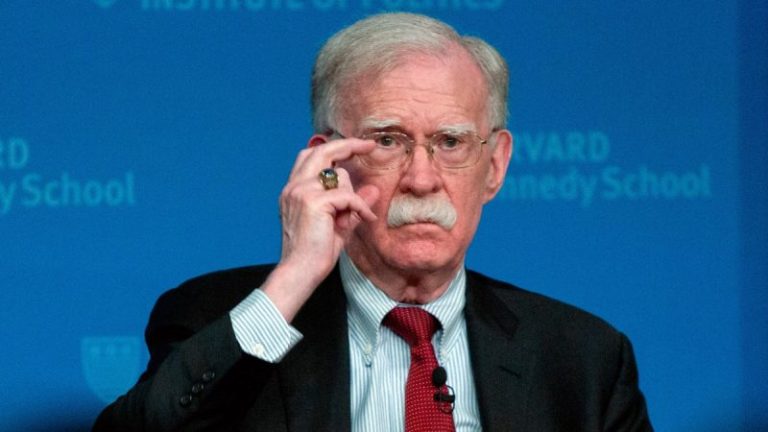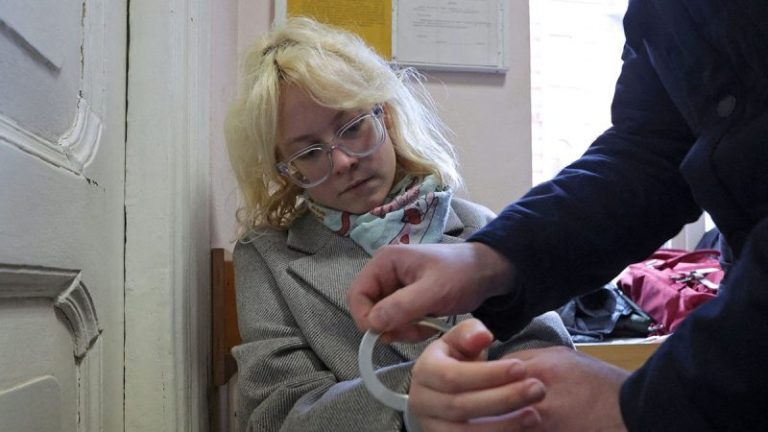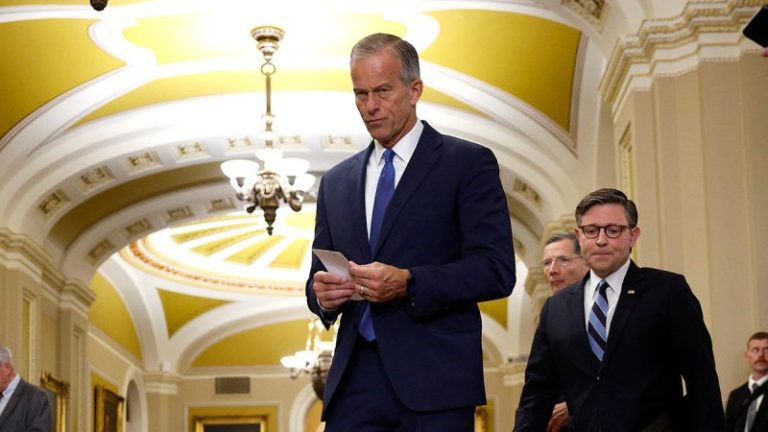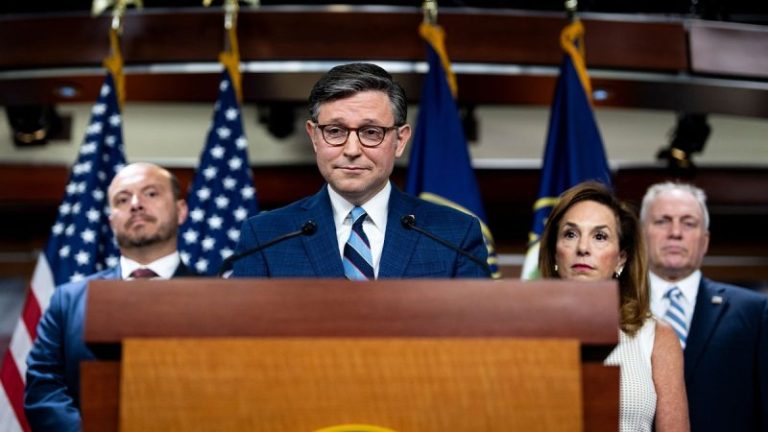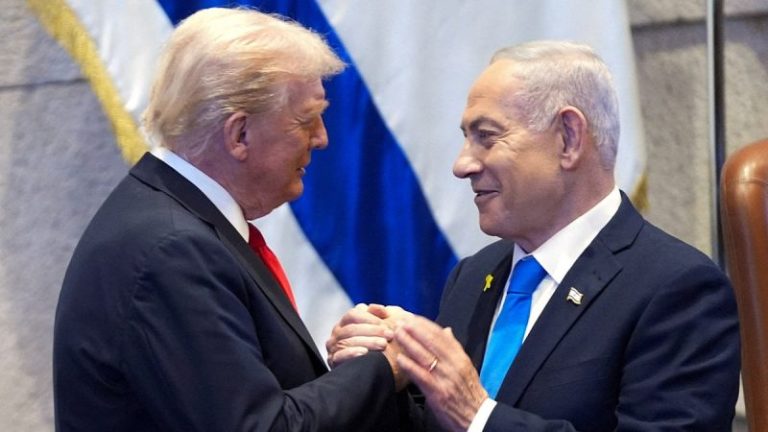Former White House National Security Advisor John Bolton was indicted Thursday on 18 counts related to the improper handling of classified materials, Fox News Digital has learned.
According to the indictment, Bolton was indicted on eight counts of transmission of National Defense Information and ten counts of retention of National Defense information.
‘From on or about April 9, 2018, through at least on or about August 22, 2025, BOLTON abused his position as National Security Advisor by sharing more than a thousand pages of information about his day-to-day activities as the National Security Advisor—including information relating to the national defense which was classified up to the TOP SECRET/SCI level—with two unauthorized individuals, namely Individuals 1 and 2,’ the indictment reads. ‘BOLTON also unlawfully retained documents, writings, and notes relating to the national defense, including information classified up to the TOP SECRET/SCI level, in his home in Montgomery County, Maryland.’
The documents Bolton transmitted were sent to two individuals unauthorized to view classified documents.
Those documents, according to the indictment, revealed intelligence about future attacks by an adversarial group in another country; a liaison partner sharing sensitive information with the U.S. intelligence community; intelligence that a foreign adversary was planning a missile launch in the future; a covert action in a foreign country that was related to sensitive intergovernmental actions; sensitive sources and methods used to collect human intelligence; intelligence about an adversary’s knowledge of planned U.S. actions; intelligence about adversary’s plans for attack conducted against U.S. Forces in another country; human intelligence using sensitive sources and methods; a covert action program; intelligence collected on the leader of an adversary nation’s military group; intelligence on an adversary’s leaders; intelligence concerning a foreign country’s interactions with an adversary; a direct statement collected via intelligence sources and methods on a foreign country; a foreign country’s intelligence describing an adversary’s planned attack on a facility; sensitive sources and methods used to collect intelligence on a foreign country; a covert action and sources and methods used; intelligence on covert action planned by the U.S. Government; intelligence confirming a foreign adversary was responsible for an attack; and intelligence on covert action conducted by the U.S. Government, a liaison partner country, and specific information about the action.
The documents were all classified as ‘TOP SECRET.’
As for the documents he allegedly retained, one document revealed intelligence about a future attack by an adversarial group in another country; another revealed liaison partners sharing sensitive information with the U.S. intelligence community; another revealed intelligence that a foreign adversary was planning a missile launch in the future; a covert action in a foreign country related to sensitive inter-governmental actions and sensitive sources and methods used to collect human intelligence.
Other documents revealed intelligence about an adversary’s knowledge of planned U.S. actions; intelligence about adversary’s plans for attack conducted against U.S. Forces in another country; human intelligence using sensitive sources and methods; and intelligence collected on the leader of an adversary nation’s military group.
Others revealed intelligence concerning a foreign country’s interactions with an adversary; a foreign country’s intelligence describing an adversary’s planned attack on a facility; intelligence confirming a foreign adversary was responsible for an attack; intelligence that a foreign country was considering specific force against another country; and more.
The documents range in classification from ‘SECRET’ to ‘TOP SECRET.’
‘The FBI’s investigation revealed that John Bolton allegedly transmitted top secret information using personal online accounts and retained said documents in his house in direct violation of federal law,’ said FBI Director Kash Patel. ‘The case was based on meticulous work from dedicated career professionals at the FBI who followed the facts without fear or favor. Weaponization of justice will not be tolerated, and this FBI will stop at nothing to bring to justice anyone who threatens our national security.’
Attorney General Pam Bondi said in a statement, ‘There is one tier of justice for all Americans.
‘Anyone who abuses a position of power and jeopardizes our national security will be held accountable,’ she said. ‘No one is above the law.’
Bolton’s Maryland home had been raided by FBI agents in August. That search was focused on classified documents agents believed Bolton possessed.
The list of more than a dozen items seized from the Bethesda, Maryland, home of President Donald Trump’s former national security advisor was included in search warrant documents filed with the U.S. District Court for the District of Maryland.
Among the technology seized from Bolton’s home were two iPhones — a red one with two camera lenses and a black one in a black case — and three computers, including a silver Dell XPS laptop with cables; a Dell Precision Tower computer model 3620; and a Dell Inspiron 2330 computer, according to the search warrant documents.
One Seagate hard drive and two Sandisk 64 gigabyte USB drives were also seized.
The list shows the FBI also took a white binder labeled, ‘Statements and Reflections to Allied Strikes…’ and typed documents in folders labeled ‘Trump I-IV.’
Four boxes containing what federal officials called ‘printed daily activities’ also were hauled from Bolton’s home, according to the documents.
The Aug. 22 FBI raid was linked to a probe of mishandling classified documents.
Bolton served as Trump’s White House national security advisor during his first administration, from 2018 to 2019.
A source familiar with the early stages of the investigation told Fox News Digital that CIA Director John Ratcliffe provided Patel with limited access to U.S. intelligence that served as the basis for the search warrant. The source told Fox News Digital that the evidence justified the raid on Bolton’s home.
‘I can’t give you any more details than that, but let’s just say that John Bolton really had some nerve to attack Trump over his handling of classified information,’ the source told Fox News Digital after the August raid.
The probe into Bolton’s alleged retention of classified documents was first launched years ago but later shut down by the Biden administration ‘for political reasons,’ according to a senior U.S. official.
The Justice Department under Trump’s first administration argued that Bolton’s 2020 memoir, ‘The Room Where It Happened,’ contained classified material and sought to block its publication. A federal judge ultimately allowed the book to be published.
Justice Department lawyers argued the book contained classified national security information covering areas like U.S. intelligence sources and methods, foreign policy deliberations and conversations with foreign leaders.
In June 2021, the Biden Justice Department abandoned both a criminal inquiry and civil lawsuit against Bolton over the memoir, ending the legal battle at that time.
Bolton’s attorney said at the time that a senior career official in charge of the National Security Council’s pre-publication review process conducted a four-month review of the book and, after requiring a number of revisions, concluded that it contained no classified information.
The book contained a damning account of the Trump White House, alleging that Trump once ‘pleaded’ with Chinese President Xi Jinping to aid his re-election campaign, among other missteps.
Trump ousted Bolton from his first administration in 2019 because the pair ‘disagreed strongly’ on policy.
Bolton has both praised and criticized Trump since leaving his first administration.
He criticized Trump’s handling of classified documents, which led to an FBI raid on the former president’s Mar-a-Lago home in 2022 and a subsequent federal indictment, but insisted that ‘the legal process play out.’
Trump initially was indicted on 37 felony counts, later expanded to 40, but the case was ultimately dismissed in July 2024.
In 2022, Bolton said Trump lacked the competence and character to be president.
However, Bolton strongly backed Trump’s military strike on Iran’s nuclear facilities in June, calling it ‘a decisive action,’ ‘the right thing to do,’ and praising its potential to generate ‘huge change in the Middle East.’
Trump, meanwhile, often has criticized Bolton for pushing U.S. involvement in wars in the Middle East. Bolton served as U.S. ambassador to the United Nations under President George W. Bush from August 2005 to December 2006.
Trump revoked Bolton’s Secret Service detail Jan. 21, the day after Trump’s inauguration as the 47th president, and Bolton said the move showed that Trump was coming after him.
‘I think it is a retribution presidency,’ Bolton told ABC earlier in 2025, responding to Trump’s move to revoke his security clearance.
Bolton has faced threats from Iran going back years, including an alleged plot to assassinate him in 2021 and the Department of Justice subsequently charging a member of Iran’s Islamic Revolutionary Guard Corps for the plot in 2022.
The Iranian threats against Bolton were likely sparked by the January 2020 U.S. strike that killed Qassem Soleimani, the head of Iran’s Quds Force, the Department of Justice reported in 2022.
Bolton did not immediately respond to Fox News Digital’s request for comment.
Fox News Digital’s Ashley Oliver and Kiera McDonald contributed to this report.

